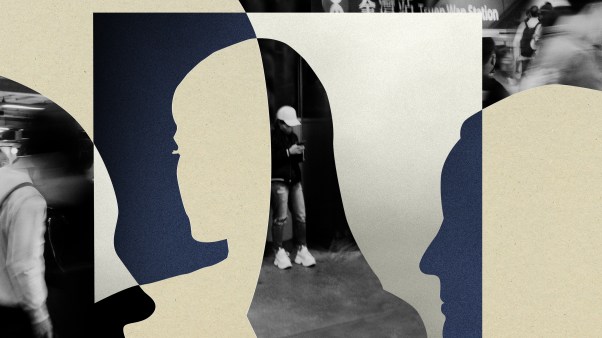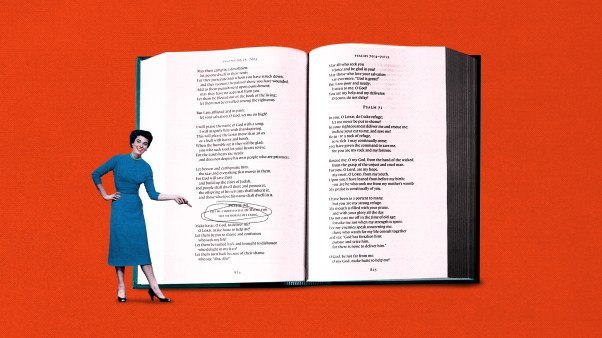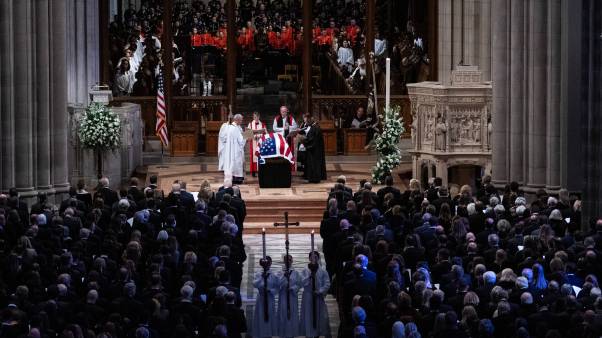On May 17, the Roman Catholic commission responsible for correcting errors in church teaching issued a guidance document with “Norms for Proceeding in the Discernment of Alleged Supernatural Phenomena.” While remaining open to genuine manifestations of the Holy Spirit, it addressed “serious critical issues that are detrimental to the faithful. … When considering such events, one should not overlook, for example, the possibility of doctrinal errors, an oversimplification of the Gospel message, or the spread of a sectarian mentality.”
The persistence of miracles within Catholicism distinguishes it from other Christian traditions. Belief in miracles represents not simply a concession to popular piety but a fundamentally different teaching about the work of the Holy Spirit and the response of the church.
Such things may seem baffling to most Protestants; in the commission’s words, they (and other doubters) would prefer to frame these phenomena as “believers being misled by an event that is attributed to a divine initiative but is merely the product of someone ’s imagination, desire for novelty, tendency to fabricate falsehoods (mythomania), or inclination toward lying.”
Rather than dismiss these claims outright, the Catholic church has established processes (like the May guidance) for adjudicating them. But this is just a refinement to a tradition of engaging with the supernatural that dates back centuries. And that history is the subject of a new book, Carlos Eire’s They Flew: A History of the Impossible.
Eire, a professor of history and religious studies at Yale University, examines how this process worked in the centuries following the Reformation. He focuses not on healings or apparitions, which are accepted more widely within Christendom, but on two extreme and peculiar supernatural events—levitation and bilocation (appearing in two places at once)—that reportedly touched the lives of several monastics and mystics.
As if that weren’t ambitious enough, They Flew sweeps into its narrative a host of related questions about competing accounts of the supernatural, their inversion in demonology and witchcraft, and their development alongside the Age of Reason. It asks readers to track with Catholic concepts of piety, holiness, monasticism, and bodily mortification, as well as the church’s institutional authority to define and regulate these matters.
By implication, the book probes the disenchantment of the modern age, the certainty of our assumptions about the past, and the limits of modern historical writing. It dares to revise our understanding of early modern Europe where other historians have fallen short.
Paths of investigation
Readers may be somewhat familiar with Eire from earlier works. His National Book Award-winning 2002 memoir, Waiting for Snow in Havana, recounts his boyhood at the beginning of Castro’s Cuba before he and his brother—and 14,000 other unaccompanied children—were airlifted from the island in 1962. His 2010 follow-up, Learning to Die in Miami: Confessions of a Refugee Boy, charts the diaspora of family members in the United States, the fate of his father (who remained in Cuba), and the awakening of Eire’s faith in Christ.
Before publishing these breakout memoirs, however, Eire had distinguished himself as a scholar of early modern history, one skilled in writing critically acclaimed books that regular readers could appreciate. In 2017, on the 500th anniversary of the Reformation, Eire published a magisterial history of the early modern era called Reformations (emphasis on the plural), which achieves an unparalleled balance between the respective Catholic and Protestant narratives.
In Reformations, Eire previews the argument he expands upon in They Flew:
As the sixteenth century gave way to the seventeenth, the boundary between the natural and supernatural seemed to shift in Catholicism. From Teresa of Avila in Spain, whose corpse refused to decompose, to Joseph of Cupertino in Italy, who flew through the air and read people’s minds, to Martín de Porres in far-off Peru, who could be in two places at the same time and also communicate with animals, the Catholic world pulsated with the expectation of everything that the Protestants ridiculed as impossible, and with an eagerness to enshrine and venerate the miraculous with more fervor than ever before, thus intensifying the differences between Protestant and Catholic cultures. …
By claiming the power to distinguish between real and fraudulent claims, and to consecrate those that were genuine, the church made clear that all miracles came through it. And miracles had a double edge: they not only confirmed and strengthened the faithful; they also served as polemical weapons in the church’s struggle against Protestantism.
Eire digs deeper in They Flew, asking readers to consider apparent impossibilities. Did certain Catholic saints actually levitate or bilocate? On what grounds could the Christian faithful accept such claims? And if we did, what would they mean for modern-day believers?
Eire understands the difficulty of his task. Miracles, as he observes, “are not just puzzling for historians but also immensely frustrating. The further one goes back in time, the more difficult it becomes not to bump into them, or into their preternatural demonic counterparts. The testimonies are simply there in the historical record, cluttering it up abundantly, and their existence cannot be denied.”
The book proceeds by retelling the lives of six monastics: Saint Teresa of Avila (1515–1582), Saint Joseph of Cupertino (1603–1663), the Venerable María de Jesús de Ágreda (1602–1665), and three disgraced nuns who lived between the late 15th and early 17th centuries. Thanks to rich source material, Eire narrates each in considerable detail, citing personal testimony, eyewitness accounts, and, in some cases, reports from officials charged with investigating the miracles in question.
In this short space, I cannot draw out the relevant details. One story stands out, however, because it was left unvalidated by the church. The case of María of Ágreda involves levitations, bilocations, and ecstatic revelations. Only the last of these, not the first two, has complicated her canonization by the Catholic church.
María is perhaps most famously associated with the phenomenon of bilocation. Reportedly, she appeared to indigenous peoples in New Mexico and Texas while physically remaining in Spain. Between 1621 and 1631, she claimed to have made hundreds of such spiritual visits, instructing the indigenous populations in Christianity and encouraging them to seek out missionaries.
As Eire explains, “This was not all. The Indians themselves and Spanish Franciscan missionaries in New Mexico would later corroborate her incredible claim and give rise to the legend of the Lady in Blue, a reference to the blue cloak that was part of María’s Conceptionist Franciscan habit.”
Through visions and “automatic writing” allegedly performed under an external spiritual power, María produced a voluminous account of the life of the Virgin Mary called The Mystical City of God. As Eire writes, it purported to contain “many intimate details not found in the New Testament or other early Christian texts.” This work faced initial resistance and was condemned by the Spanish Inquisition and the Sorbonne for its controversial theological content. Despite this, Eire notes, it “lent an authoritative seamlessness to the narrative of her miraculous missionary feats” and gained considerable attention among clergy and laypersons alike. Published in 1670, five years after her death, it remains a source of inspiration for some Catholic believers.
Adding to the complexity of her case, María ’s influence extended to the Spanish royal court through her extensive correspondence with King Philip IV, to whom she served as spiritual adviser and confidante for many years. Her letters covered a wide range of topics, from spiritual matters to political advice, highlighting her significant influence on the king and his policies.
Since her death, María’s life and works have been the focus of considerable debate between those who wish to canonize her and those who remain deeply skeptical. Less than 10 years after her death, she was elevated to the status of Venerable by Pope Clement X, but the Catholic church remains slow to advance her beatification—and that, as Eire demonstrates, is to its credit.
The case of María presents a focal point for Eire between paths of investigation and the limits of a historian’s ability to follow. He writes:
María’s case allows us to examine the troublesome roles played by interpretation, embellishment, and exaggeration in the forging of narratives as well as in the creation of doubt and suspicion. Conversely, her case also provides a clear glimpse of the ways in which the Catholic Church sought to maintain a delicate balance between popular piety and official theology and between the affirming and questioning of the seemingly impossible. The fundamental questions raised by María’s miracles were immense precisely because of their seemingly outlandish otherworldliness. That excessiveness exposed the fragility of her claims, along with her own vulnerability. Yet, at the very same time, her miracles also reveal the eagerness with which impossible feats could be believed in and embellished, or even suggest the likelihood of pure fabrication.
Our responses to María of Ágreda reveal a lot about our preexisting intellectual and theological frameworks. Contemporary Protestants struggle to accommodate certain expressions of individual piety. And contemporary readers in general struggle to overcome certain entrenched assumptions about the limits of the possible.
Otherworldly holiness
While much of Eire’s material was new to me, especially as someone coming from a Protestant background, I was willing to follow him with an open mind into new territory. I found Eire’s deft handling of these matters wise and inviting. Their strangeness only enhanced their mystery.
Eire confronts gargantuan topics that have roiled culture and religion for centuries—the profound consequences of the Protestant revolution, the disenchantment of the modern age, the relationship between faith and skepticism, the reliability of our mental models of reality, and the continuing action of God in the world. They Flew provides a historical scaffolding for exploring all these issues and more, guided by one of wisest writers I know.
Much more could be said about Eire’s remarkable book. I haven’t even touched on the way he engages with Protestant reactions to the supernatural (almost always dismissed as demonic if not outright fraudulent). That my own tradition should hold these default interpretations could seem to contradict belief in God’s sovereignty.
Unlike Eire ’s previous works, They Flew has an undeniably polemical edge, since the book underscores deep divides between Catholics and Protestants. And it ’s clear throughout that Eire takes the Catholic side, which makes the book all the more compelling. It was impossible not to find myself engrossed in Eire’s meticulous—one might even say loving—handling of these narratives.
As he explains in one revealing passage:
Although a good number of Catholics in North America and Europe no longer pay much attention to [miracles as a] marker of Catholic identity—and some might even express embarrassment and dismay at its robust survival—these core beliefs remain embedded in global Catholicism as well as in the official teaching of the Catholic Church. Because these beliefs are still a cornerstone of the cult of the saints and this cult is itself an essential component of Catholic piety and identity, it is very difficult to imagine them being jettisoned. Simply put: no miracles, no Catholicism.
Eire’s entire investigation seems fueled by a drive to know how these claims drove a wedge between Catholics, who saw these miracles as evidence of God’s providence, and Protestants, who saw them as demonic.
This aspect of Eire’s book strikes me less as a provocation than as a challenge. As a Protestant, how far am I willing to engage these narratives as alternative models for Christian piety? I want to let them complicate my assumptions about what it means to lead a faithful, godly life—and my own knee-jerk rejection of anything miraculous in the post-apostolic age. If Christ has risen from the dead, who am I to judge?
That said, I also found my sympathies stretching only so far. Most of the saints Eire portrays pursued holiness through the mortification of the flesh, to an extent that often made me wince.
Take this detail, for instance: “In addition to fasting constantly and observing a vegan diet, María wore a hair shirt under her habit, along with a girdle studded with spiked rings and a heavy abrasive vest of chain mail. To top off her self-punishment, she also wrapped her body in chains and fetters, scourged herself daily, and wore a crucifix riddled with needles that she could press into her breast when she prayed.” We cannot conceive in our own day and age how these monastics could inflict their own physical suffering in pursuit of the divine. To moderns, such masochism looks like a form of madness.
I also wished that Eire had provided a more thoroughgoing critique of mass delusion as a possible explanation for these miracles. Eyewitness testimony is fraught with many well-observed behaviors and self-deceptions that distort the truth. Eire does not discount this interpretation of events—rooted in the madness of crowds, especially those motivated to see what they want to see—but he stops well short of embracing it.
It is certainly true that Protestants saw the same events and interpreted them very differently. So how do we account for these varying tendencies of the human mind? Eire doesn’t address these concerns directly, instead trusting the admittedly diverse source material more than others might.
Whatever we make of these saints’ lives, they provide a powerful witness to other ways of living out one’s faith. We can learn from their devotion, their call to purity, their denial of self, and even their mortification of the flesh in pursuit of otherworldly holiness.
More than that, we have Eire’s own example to learn from—his life story, his generosity of spirit, and his contributions to our understanding of the early modern period. Watching his delight in recounting these stories of the impossible is an act of faith itself. One might even say that it’s miraculous.
Garrett Brown is a writer and publisher living in Northern Virginia. His Substack page is @noteandquery.










